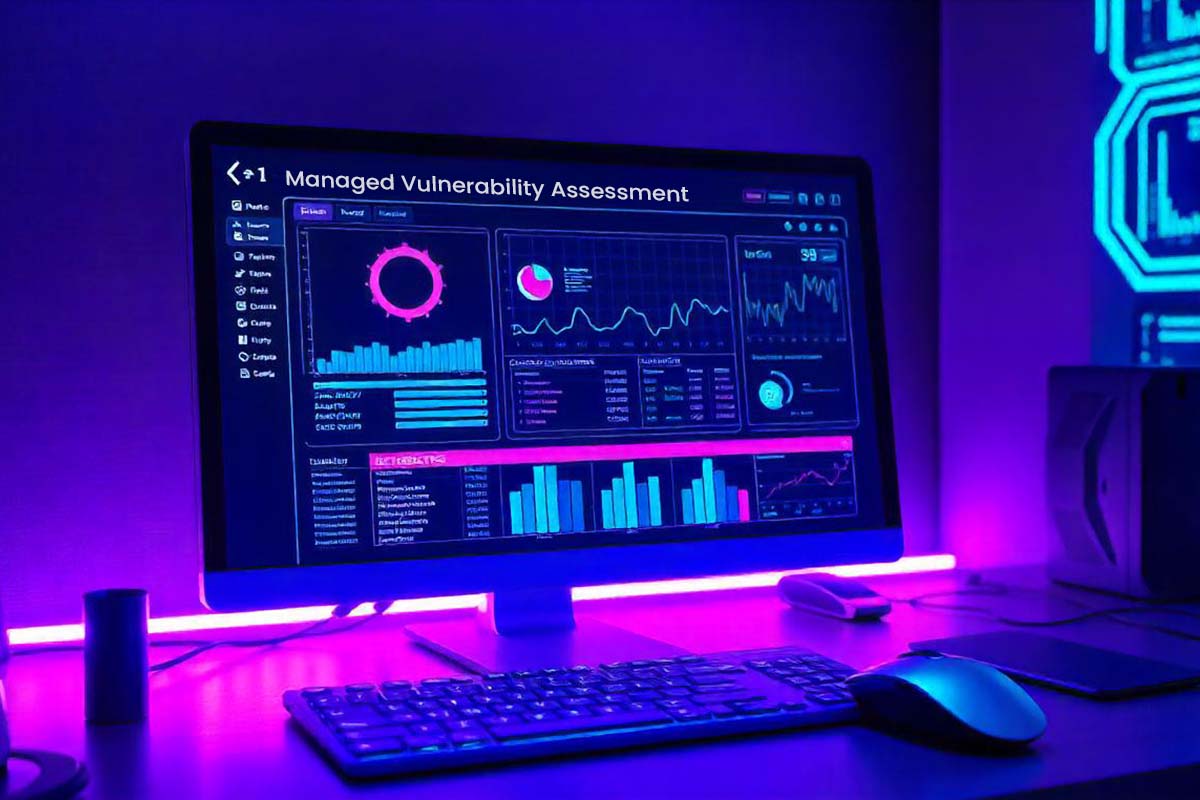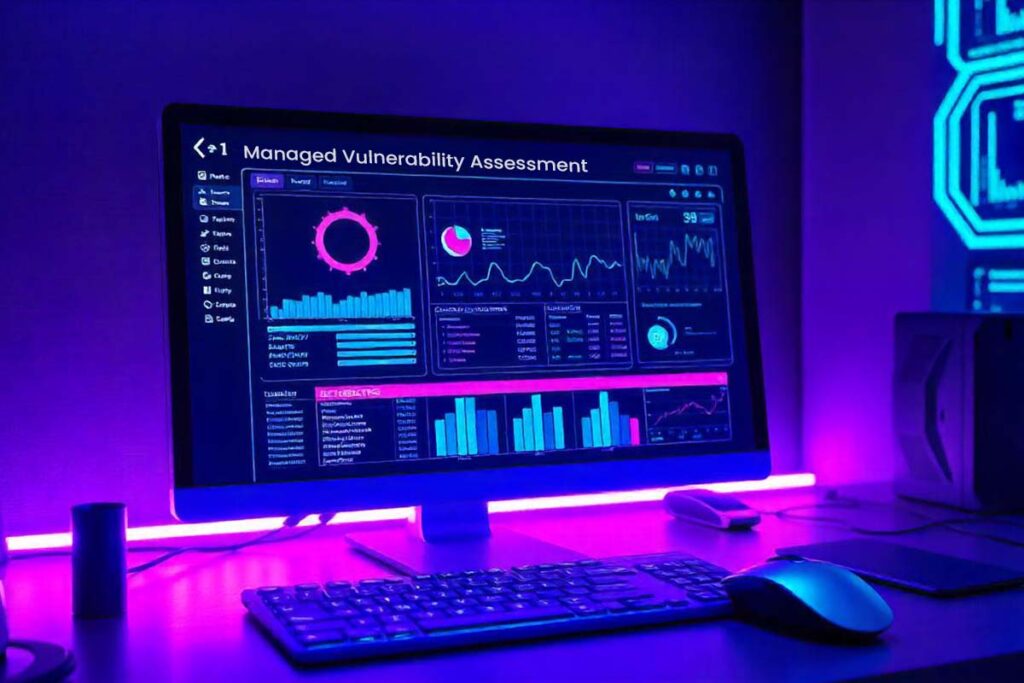





Vulnerability assessment is a critical practice that empowers businesses to identify and address security weaknesses across their systems and infrastructure. By systematically uncovering vulnerabilities, organisations can proactively implement protective measures to mitigate risks and reduce exposure to cyber threats. According to the 2023 Data Breach Investigations Report by Verizon, 82% of breaches involved a human element, with many stemming from unpatched vulnerabilities that could have been resolved through routine assessments. Such findings highlight the pressing need for organisations to prioritise this preventive approach.
The role of proactive threat detection in maintaining business continuity cannot be overstated. A report from the Australian Cyber Security Centre (ACSC) found that Australian businesses reported over 76,000 cybercrime incidents in the 2022–23 financial year, with many of these incidents resulting in operational downtime and financial loss. Timely vulnerability assessments enable businesses to identify weaknesses before they can be exploited, thereby safeguarding critical systems and minimising the likelihood of disruption. Integrating this proactive methodology into an organisation’s broader cybersecurity framework not only enhances resilience but also builds trust with stakeholders by demonstrating a commitment to robust security practices.
A managed vulnerability assessment is a structured and continuous process that identifies, analyses, and remediates security vulnerabilities across an organisation’s IT infrastructure. Unlike traditional vulnerability management methods, which may be ad hoc or reactive, managed vulnerability assessments integrate systematic practices into a broader cybersecurity framework. This ensures that potential risks are proactively identified and mitigated before they can be exploited.
The process consists of three core components:
Managed vulnerability assessments differ from traditional methods by their emphasis on automation, regular reporting, and continuous improvement. Instead of relying on periodic manual audits, managed services incorporate advanced tools and expert oversight to deliver real-time insights and actionable recommendations. This ensures not only a more efficient approach but also better alignment with compliance frameworks and evolving threat landscapes.
Unaddressed vulnerabilities pose significant risks to organisations, potentially leading to severe financial losses, operational disruptions, and reputational damage. A notable example is the Equifax data breach in 2017, where an unpatched software vulnerability led to the exposure of sensitive information belonging to 147 million individuals. The aftermath included a financial loss exceeding $1.4 billion and irreversible damage to customer trust. Such incidents demonstrate the critical need for proactive threat detection to prevent avoidable compromises.
Proactive threat detection involves identifying and mitigating vulnerabilities before they can be exploited, contrasting sharply with the reactive approach of addressing issues after an attack. Research from Cybersecurity Ventures highlights that the global cost of cybercrime is expected to reach $10.5 trillion annually by 2025, with a significant portion attributable to preventable breaches. In Australia, the Australian Signals Directorate (ASD) advises organisations to adopt proactive measures as part of the Essential Eight framework to minimise security incidents and ensure operational continuity.
The financial and reputational impacts of reactive security are profound. Reactive measures often involve significant expenses for incident response, legal fees, and compensation, coupled with prolonged operational downtime. In contrast, proactive strategies, such as regular vulnerability assessments and robust monitoring, are more cost-effective and strengthen stakeholder confidence. Below is a comparison of proactive and reactive security approaches:
| Aspect | Proactive Security | Reactive Security |
|---|---|---|
| Cost | Lower (preventive tools, regular assessments) | Higher (incident response, legal fees, fines) |
| Impact on Operations | Minimal disruption | Significant downtime and potential data loss |
| Reputation | Enhanced trust from stakeholders | Loss of customer trust and brand reputation |
| Risk Mitigation | Identifies and resolves vulnerabilities early | Responds to issues after damage occurs |
Adopting a proactive approach not only reduces financial risks but also demonstrates a commitment to maintaining the integrity and reliability of an organisation’s operations.
Managed vulnerability assessments offer numerous advantages, empowering organisations to strengthen their cybersecurity posture while meeting regulatory obligations. By adopting this approach, businesses can systematically prioritise risks, ensure compliance, and reduce their exposure to evolving threats.
Australia’s regulatory framework places significant emphasis on cybersecurity. The Office of the Australian Information Commissioner (OAIC) mandates strict guidelines for safeguarding personal data under the Privacy Act, with non-compliance attracting severe penalties. Similarly, the Critical Infrastructure Act requires critical sectors such as energy, healthcare, and transport to adopt advanced security measures. Managed vulnerability assessments align with these requirements by enabling real-time monitoring, incident prevention, and comprehensive reporting.
An effective managed vulnerability assessment solution is built on advanced capabilities that ensure comprehensive coverage, timely risk identification, and efficient remediation. The following features are essential for organisations seeking to fortify their cybersecurity infrastructure:
Real-time monitoring allows for continuous assessment of systems and networks, ensuring vulnerabilities are detected as they emerge. Tools such as Tenable Nessus and Qualys Vulnerability Management provide live scanning features, enabling organisations to maintain up-to-date risk profiles.
Effective solutions prioritise vulnerabilities based on factors such as severity, exploitability, and business impact. This ensures that critical threats are addressed first, optimising resource utilisation. For instance, Rapid7 InsightVM uses risk scoring algorithms to rank vulnerabilities and provide actionable insights.
Comprehensive and automated reporting enables organisations to understand their security posture, track remediation efforts, and demonstrate compliance with regulatory requirements. Leading tools generate customised reports tailored to specific industries or compliance frameworks.
Managed service providers (MSPs) play a pivotal role in delivering these solutions. By leveraging their expertise, MSPs offer end-to-end vulnerability management services, including deployment, monitoring, and regular reporting. This allows organisations to focus on their core operations while benefiting from specialised security practices.
| Feature | Qualys Vulnerability Management | Tenable Nessus | Rapid7 InsightVM |
|---|---|---|---|
| Real-Time Monitoring | Yes | Yes | Yes |
| Risk Prioritisation | Yes (Context-Aware) | Yes (Threat Intelligence) | Yes (Risk Scoring) |
| Automated Reporting | Customisable Reports | Detailed Compliance Reports | Custom Dashboards and Alerts |
| Regulatory Alignment | ISO 27001, GDPR | PCI DSS, ISO 27001 | PCI DSS, NIST |
Integrating these key features into a managed vulnerability assessment solution equips organisations with the tools to proactively manage risks, improve compliance, and enhance overall security resilience.
Despite its critical importance, vulnerability management is often hindered by challenges and misconceptions that can limit its effectiveness. Addressing these issues is key to building a robust security framework.
1. Resource Constraints: Many organisations, especially small and medium-sized enterprises (SMEs), struggle to allocate sufficient resources for comprehensive vulnerability management. This includes both financial resources for advanced tools and skilled personnel to oversee the process.
Solution: Partnering with managed service providers (MSPs) or leveraging cost-effective solutions aligned with the ACSC Essential Eight can alleviate resource pressures.
2. Lack of Expertise: Cybersecurity is a specialised field, and many organisations lack in-house expertise to conduct detailed vulnerability assessments or interpret results effectively.
Solution: Upskilling internal teams through training or outsourcing to experienced professionals ensures vulnerabilities are managed correctly and efficiently.
3. Misconception of One-Time Activity: A prevalent misconception is that vulnerability assessments are a one-off task rather than a continuous process. This mindset leaves organisations exposed to emerging threats.
Solution: Establishing a culture of continuous monitoring and regular assessments ensures that new vulnerabilities are promptly identified and addressed.
By addressing these challenges and misconceptions, organisations can strengthen their cybersecurity posture and align with best practices recommended by industry frameworks and regulatory bodies.
Learn more about how Fort1’s Managed Vulnerability Assessment services can help secure your organisation.
Vulnerability management is an essential aspect of modern cybersecurity, enabling organisations to identify, prioritise, and remediate risks effectively. Managed vulnerability assessments provide a structured, proactive approach to mitigating threats, reducing operational downtime, and ensuring compliance with Australian regulations such as the Privacy Act 1988 and the Critical Infrastructure Act 2018. By leveraging features like real-time monitoring, automated reporting, and expert oversight, businesses can enhance their security posture and protect critical assets.
Adopting managed vulnerability assessments is not merely a recommendation but a necessity in today’s evolving threat landscape. Partnering with Fort1, a trusted cybersecurity provider, ensures that your organisation can access specialised tools and expertise to safeguard its systems and data. This approach not only minimises risk but also builds trust with stakeholders and customers.
Ready to take your cybersecurity strategy to the next level? Explore Fort1’s Managed Vulnerability Assessment services to learn how we can help your organisation stay secure, compliant, and resilient in the face of modern threats. Visit fort1.com.au and secure your business today!

Fort1 provides comprehensive cybersecurity solutions tailored to protect your business from evolving digital threats. With expertise in penetration testing, dark web monitoring, and managed detection services, we empower organisations to stay secure and resilient in the face of modern cyber challenges.
Copyright @2024 Fort1. All Rights Reserved by Fort1.